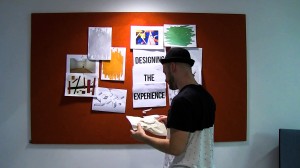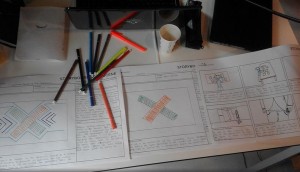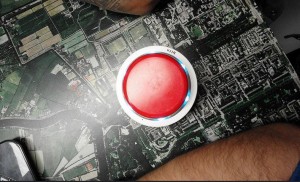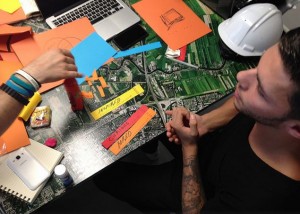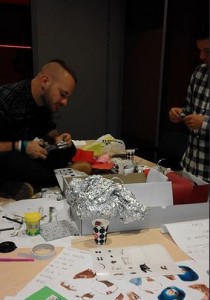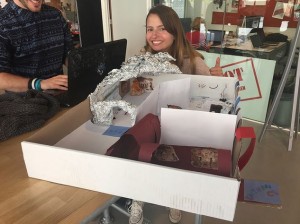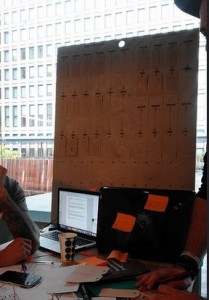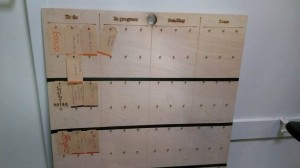Hello dear readers (real or fictional)! After one week without a post, team D.E.S is back! I think, that from the title of this post, you can easily understand that what follows, is “maybe” about something positive that occurred, during this or the previous week.
You are right once again, and we are really happy to share with you the new data that exist on our project today.
The last thing we informed you about, was that we were kind of shocked after the “overlap” between our project and the one of Waag Society. However, as we said on the previous blogpost, this event motivated us to move forward and try our best in order to make a difference. This started, with the smart guide that we made, entitled “A smart guide for co-creating a museum experience”. This guide functioned literally as a guide for us and was the one which helped us on the formation of our new concept. All the data that we have been collecting so far around important notions directly linked to our project (co-creation and experience design) found their place, organised and nicely combined with illustrations in this guide. Even if this guide took us about two weeks to get prepared, it mirrored in the best way the new possibilities that co-creation can bring for cultural institutions. We had to succeed into two goals during this second sprint and we are happy and proud that we made it.
First Goal
Create a smart guide based on co-creation (curators-visitors) for upcoming museum exhibitions. Including also information for Experience Design.
Second Goal
Based on this guide, come up with a new concept, which will appear as an outcome of the research conducted for the formulation of this guide. If possible create a first model or prototype of your new concept.
Method
For the completion of the smart guide, we used questions in order to build upon our research. Some of these questions were:
What is co-creation?
Why use co-creation?
What is an experience?
Why design for an experience?
How can you apply co-creation?
How to make co-creation successful?
The benefits of creating an experience?
How to collect data from the co-creation process?
How to translate collected data into useful data for exhibition making?
These questions, included also many sub questions which we also researched in order to have better and more concrete results. Following this, we decided to use the method “Photo Safari” in order to understand what visitors consider important and what represents for them a museum experience. Based on this, we visited the exhibition (Angelo) of Amsterdam Museum “Graffiti: New York meets the Dam” and we asked visitors to capture with their phones, whatever for them makes unique a visit to an exhibition. Every picture came along with some sentences, as an explanation of their choice and its importance to them.
While we explored the one side (visitors) we also included information from the 1 on 1 interviews that we conducted with museum professionals during our first Sprint. Focusing on the aspects of co-creation and experience design, we could compare both sides and see differences or similarities on their approaches. The rest of the content of the guide includes information from literature study and review, making also connections with other fields in order to see how co-creation has been explored/expressed so far. This boundary shifting, combined also with the examination of a theme park case (Efteling) allowed us to explored both Experience Design and Co-Creation through the various approaches that they can take.
Further, through this guide we realised the broadness of these notions (co-creation and experience design) and the need for us to make , an easy to use end product, without much complexity both for visitors and mainly for the curators. While co-creation especially, is a new term within the cultural field, our new concept aims to lead to the creation of a toolkit which will be easy to use, educational for both visitors and curators (on co-creation, collaboration and participation) and enjoyable to use.
As i mentioned before, we managed to succeed on both our goals for this sprint, while we presented both a complete guide and also a prototype (cards and a maquette) for our new concept. We decided that we would like to go for something physical which is possible to have some small digital implementations (extensions). Our new concept derives from the insights of our guide, from the valuable elements we kept from our previous concepts and also from part of the research conducted at CREATE IT. The cards we made represent only some of the sixty categories that will be used during a co-creation workshop, for the formulation of upcoming exhibitions. Every card will have a different color which represents the category which it comes from. The main categories are six: Layout, Aesthetics, Ambient, Flow, Media and Social. There will be two card versions, one for the visitors and one for the curators, with specific instructions for both.
For example the first card that we made is about Music, which belongs to general category of Ambient (green color). Every card starts with a small quote on the topic, continues with the activity that needs to be done based on the topic, a small tip, what is needed for the completion of the activity and what the output should be.
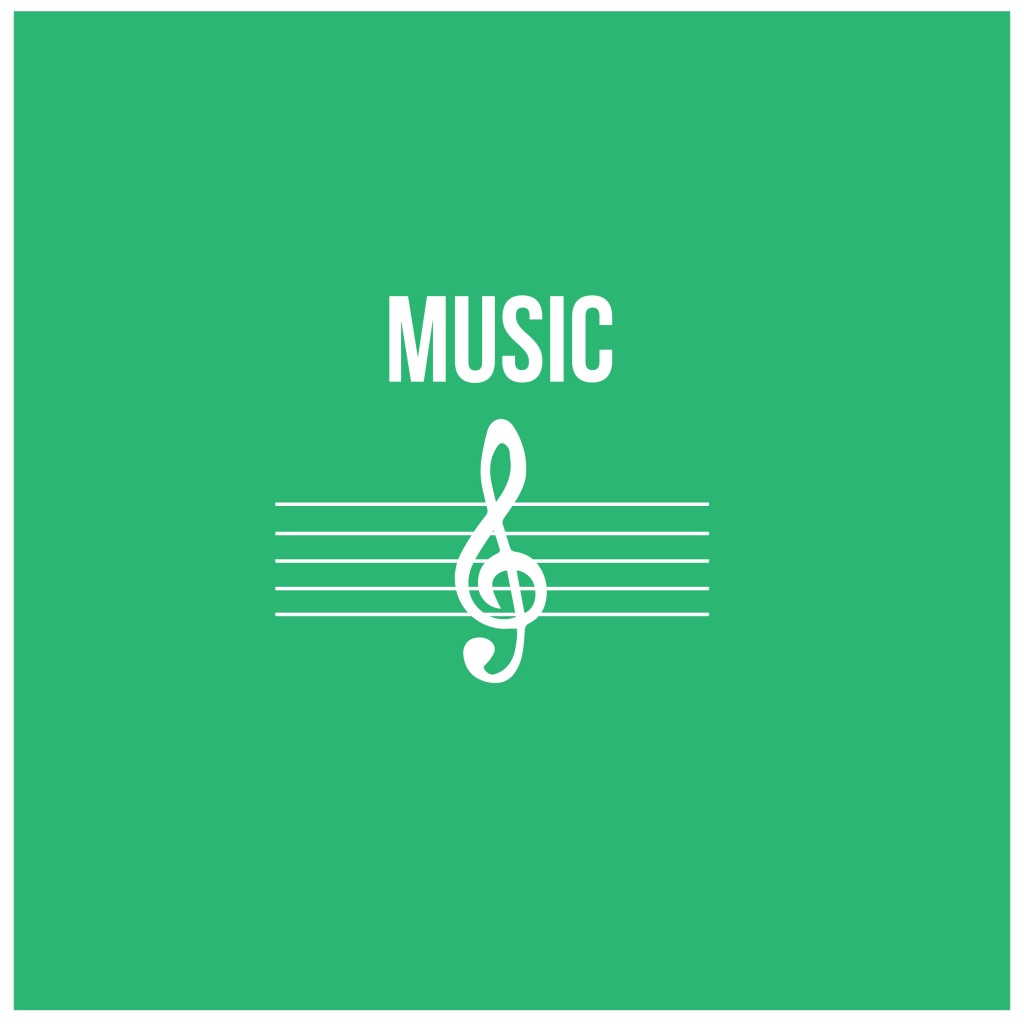
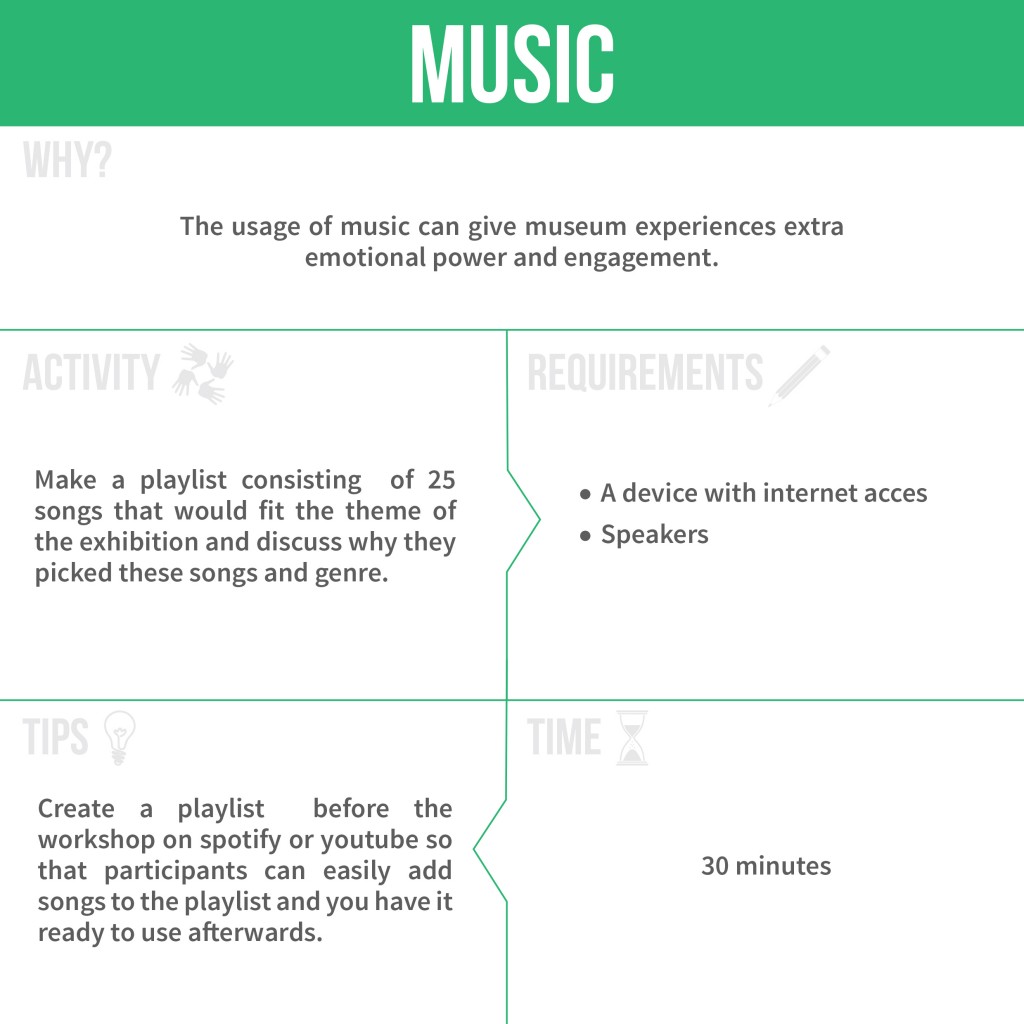
Through these method cards, we aim to bring together the public with the museum professionals inside a common space (co-creation workshop) for a common understanding during a creative process. The co-creation workshop was chosen among the other categories of co-creation because as we found through our research during this users are involved in brainstorm sessions in order to generate ideas or involved in concept workshops to enhance ideas. Co-creation workshop are especially suitable to gain more insight in the needs of your customers or to find ideas that are relatively easy to implement on short or middle long term. Through the activities, participants will be able to add their own ideas and content for the design of a new exhibition in the form of feedback that curators can use efficiently in order to serve their needs.
How the feedback will be collected?
In order to make it easy both for visitors and mainly for curators we decided that every activity will be mirrored on a physical maquette (model) which will function as a feedback platform. This model will represent the space of the upcoming exhibition that visitors can use in order to make sense of the space and visualize how the exhibition can be.
Physical connection is possible to make them provide better feedback compared to just using the cards that we will provide them. Also if we succeed on incorporating some digital elements on this model, we can make it also further interesting and inspiring for them.
Phy-gital (aka Internet of Things)
Phygital is a new term of great interest globally, which is also explored for new ways to approach the future of museums. This concept supports the belief that physicality with some digital extensions holds the keys for further engagement and interactivity for visitors in cultural institutions. We hope that our concept will add something more to this this “exploration” in cultural institutions, while as you can see through our prototype we will try to work under this new and interesting topic.
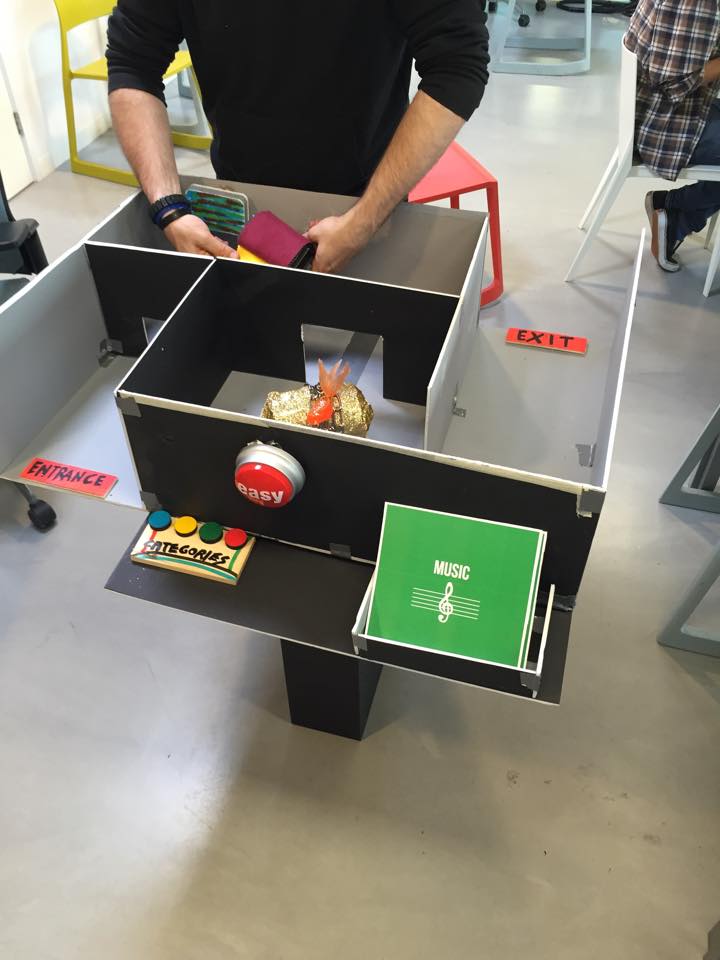
In order to understand our concept better, check our video
Hopefully both people (colleagues and coaches) from MediaLAB and most important our stakeholders (Bernadette Schrandt and Don Blaauw) really liked our new concept (FINALLY) and it is THE ONE that we can work with from now and develop it as much as we can, till our deadline. We are really happy about it and we aim to try our best in order to make something enjoyable and most important useful for as many museums as possible. Thank you once again for reading! We will keep you informed for the next steps of our project, but now with more information about our upcoming product.
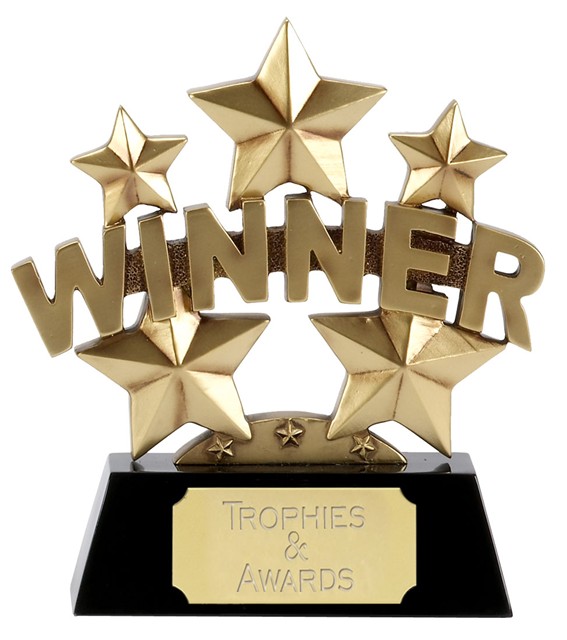
We feel like true Winners this week!!!
Have a nice weekend!!!!
Angela, Angelo and Constantine






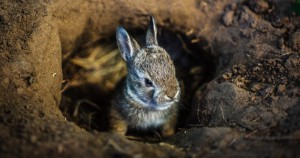
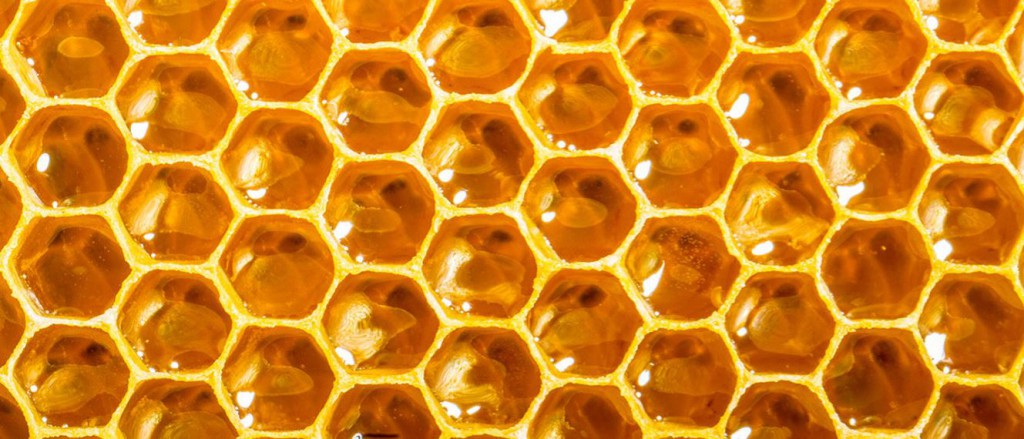


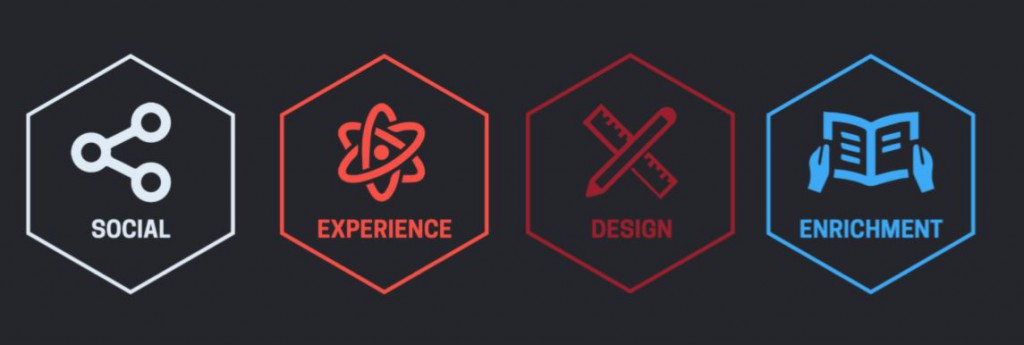
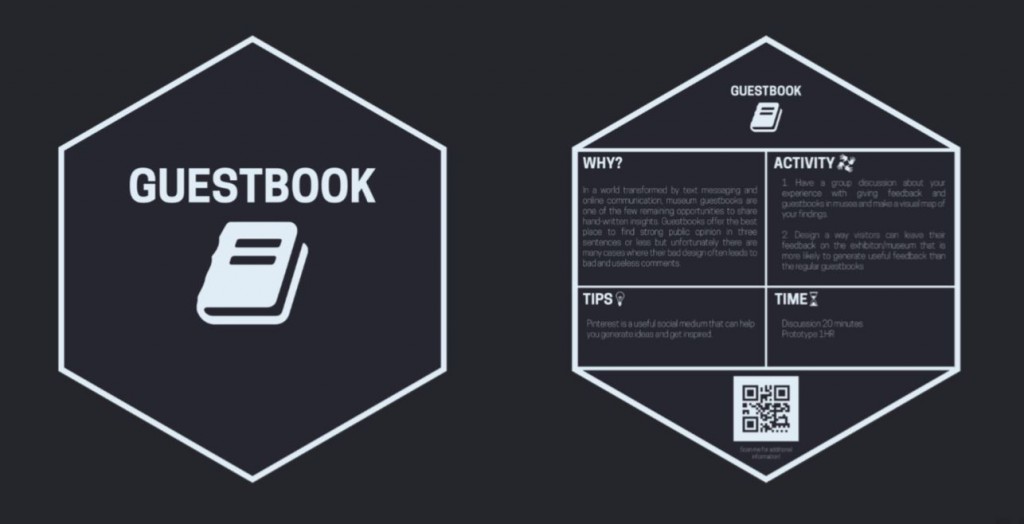
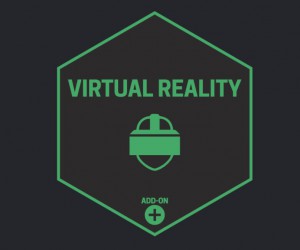


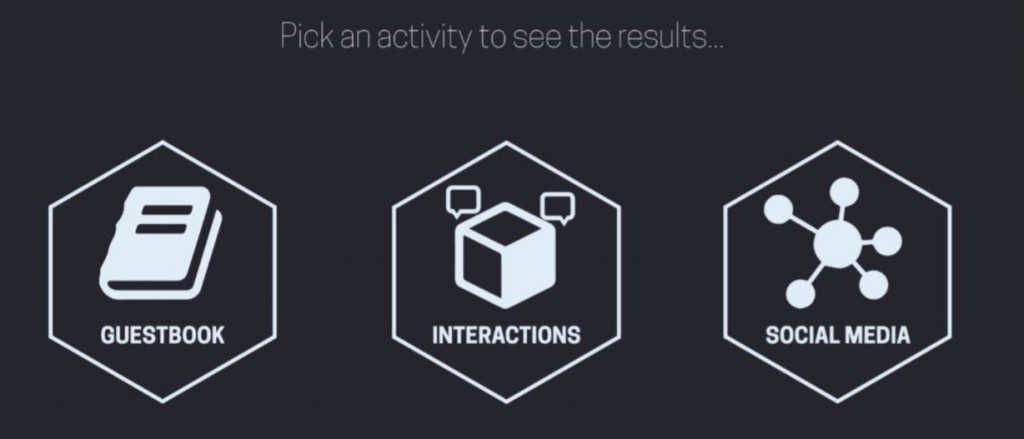
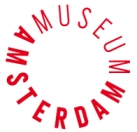




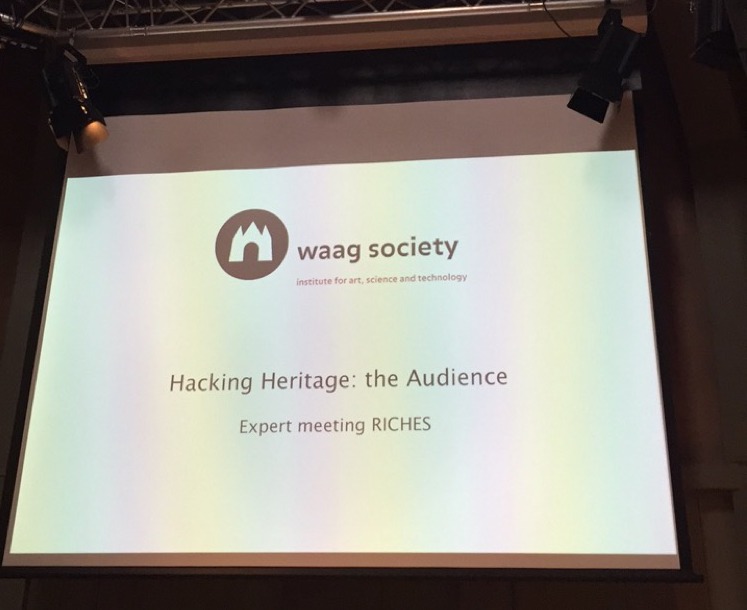
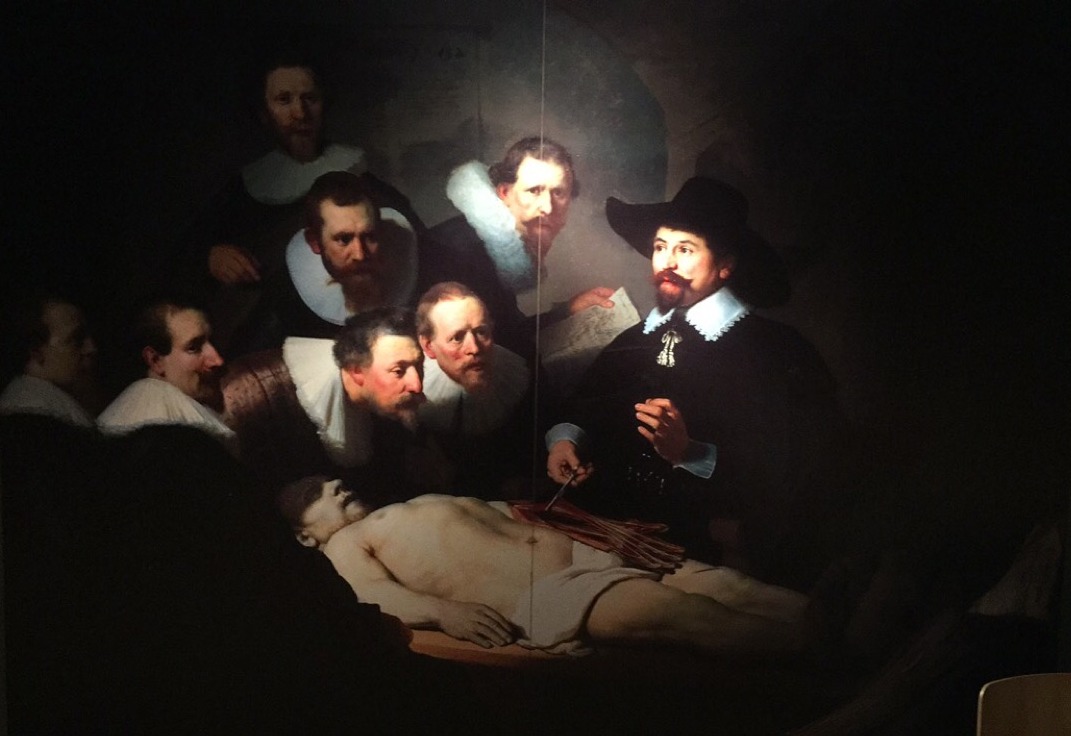
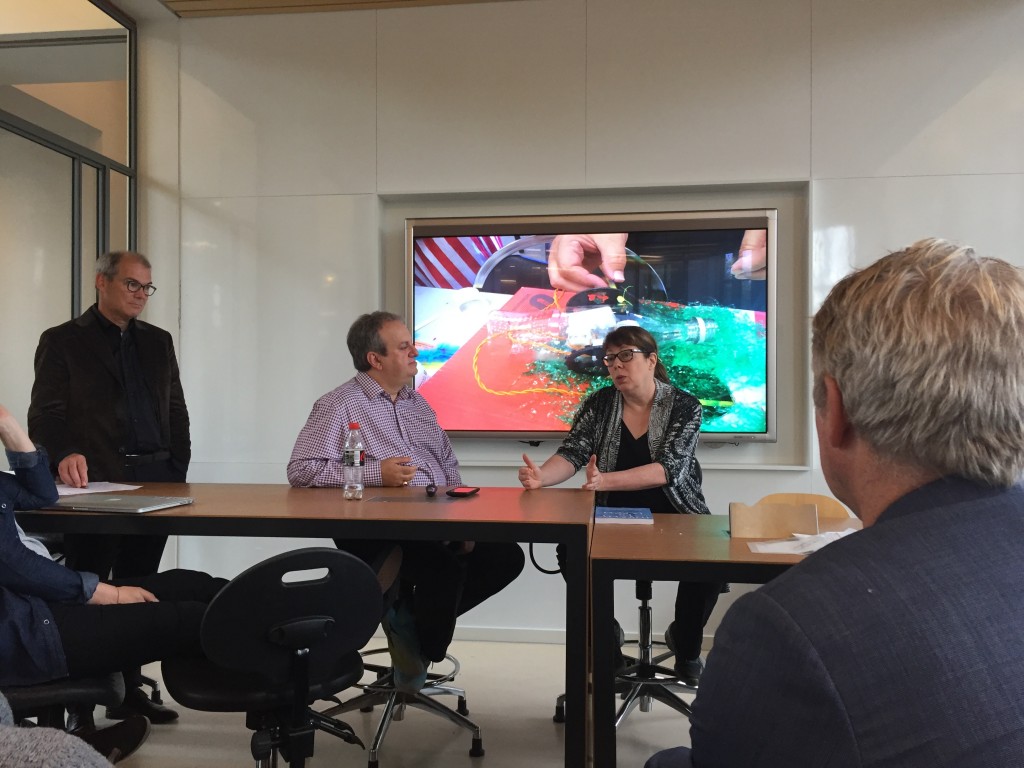
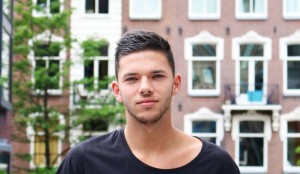

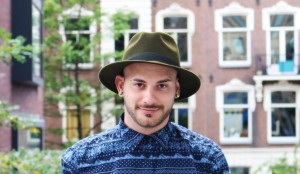 Constantine Dranganas
Constantine Dranganas